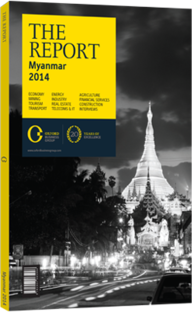OBG talks to Dr Kan Zaw, Minister of National Planning and Economic Development

Interview: Dr Kan Zaw
What steps will be taken to reduce poverty during the modernisation of the country’s economy?
DR KAN ZAW: At the moment, 70% of our population lives in rural, often underdeveloped, areas. Within 50 days of the formation of our new government we had a national forum and workshop targeting poverty reduction and rural development. This was organised by the Ministry of National Planning and Economic Development. As a result of the workshop, we were able to draw up a five-year action plan for the 2011-16 period, known as the Poverty Reduction and Rural Development Plan.
This is very much in line with the first millennium development goals (MDGs) established by the UN, which has already laid out objectives. The first goal is to halve the poverty rate by the end of 2015. We conducted a survey in 1995 in conjunction with the UNDP and the Swedish International Development Agency. Our first results showed that the country had a 32% poverty rate. When we conducted a second survey five years later the poverty index had gone down to 25.6%.
We are aiming to cut poverty down to 16% by 2015. To achieve this goal, we have laid out eight initiatives to be carried out by individual ministries, which seek to increase agriculture production, livestock and fisheries output, and rural production, such as home-based industry. They will also boost rural cooperatives, increase microcredits, strengthen and improve the rural social economy – including health, education and social welfare – and enhance rural energy provision, including rural electrification. They will also strengthen environmental protection and deforestation in rural areas.
What opportunities do you think exist for diversification to aid economic growth?
KAN ZAW: Various ministries are currently taking steps to enhance and strengthen diversification among crops, products and exports. The process of transitioning from traditional to modern farming techniques is now occurring, with special focus being placed on hybridisation, irrigation and modernisation. This is a very significant transformation that will play a vital role in the development process of Myanmar.
What is your assessment of the nation’s current infrastructure capacity?
KAN ZAW: The government has traditionally placed a significant focus on infrastructure development. During 20 years under military rule, we experienced infrastructure investment, especially in dams and roads, such as those in Yangon and the Mandalay highway.
These infrastructure investments created an impetus for our future programmes and development plans.
The main hindrances and obstacles were those imposed by sanctions. As a result of the West lifting sanctions many doors of opportunity have opened up. We had our second national workshop on reform in August 2011. This was also very significant because it was the first time opposition leader Daw Aung San Suu Kyi engaged with government on an official level and attended the opening of the Myanmar International Convention Centre in Nay Pyi Taw. One day before the opening she visited the president’s house. That was a big step for Myanmar and a big step for reconciliation.
What steps should new entrants take before entering Myanmar’s newly opened economy?
KAN ZAW: New companies should consult the newly drafted Foreign Investment Law (FIL). It lays out all the facilitations and incentives available to new entrants.
Currently foreign entities can have between 20% and 100% ownership, depending on the sector. The FIL can also act as a guide in terms of land use and the legal structures in place for investment.
I would also encourage investors to look into our three special economic zones (SEZs), namely the Thilawa SEZ, the Dawei SEZ and the Kyaukphu SEZ. These are being established to accommodate a variety of industries. We are also implementing and introducing new industrial zones that could provide certain advantages for foreign players seeking to enter the market.
You have reached the limit of premium articles you can view for free.
Choose from the options below to purchase print or digital editions of our Reports. You can also purchase a website subscription giving you unlimited access to all of our Reports online for 12 months.
If you have already purchased this Report or have a website subscription, please login to continue.

